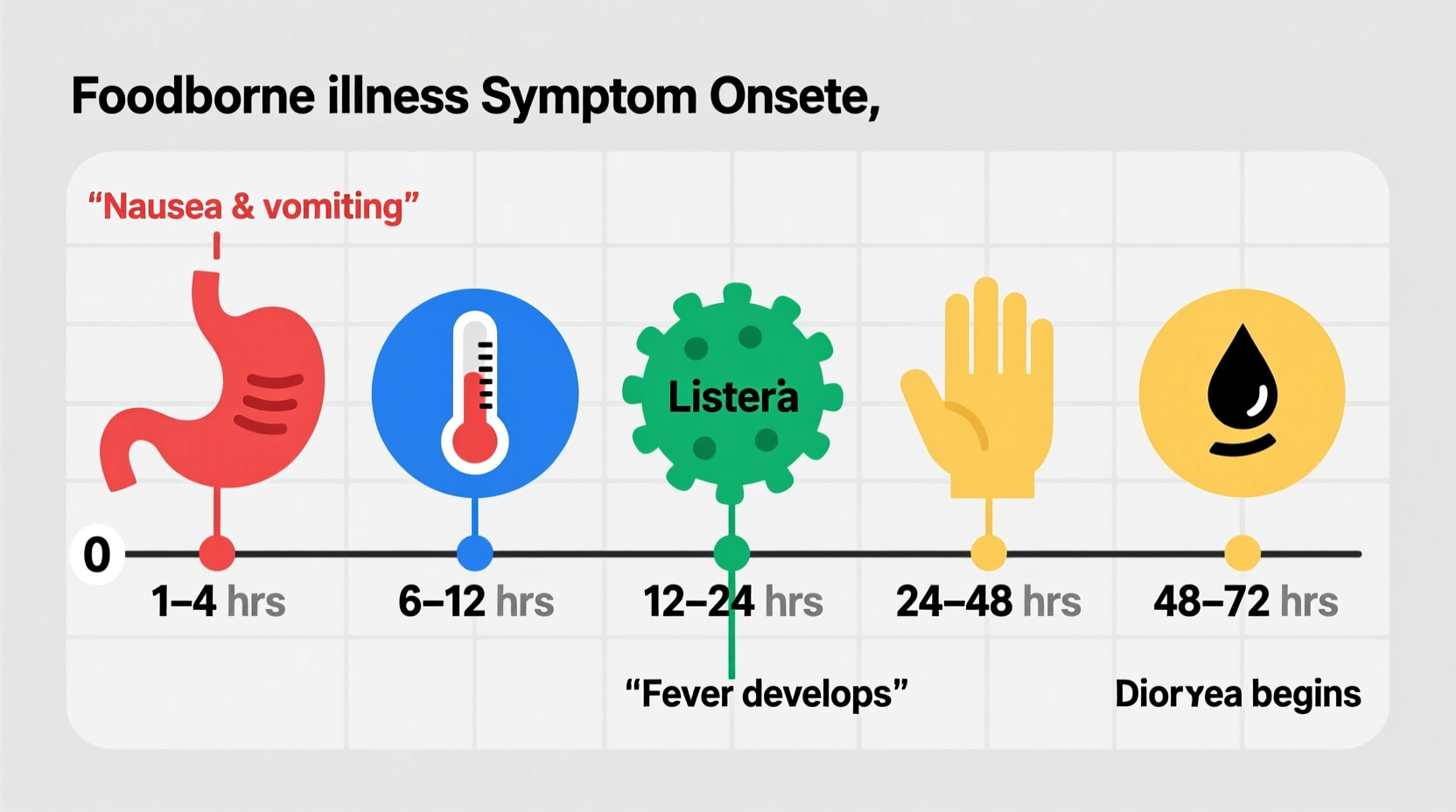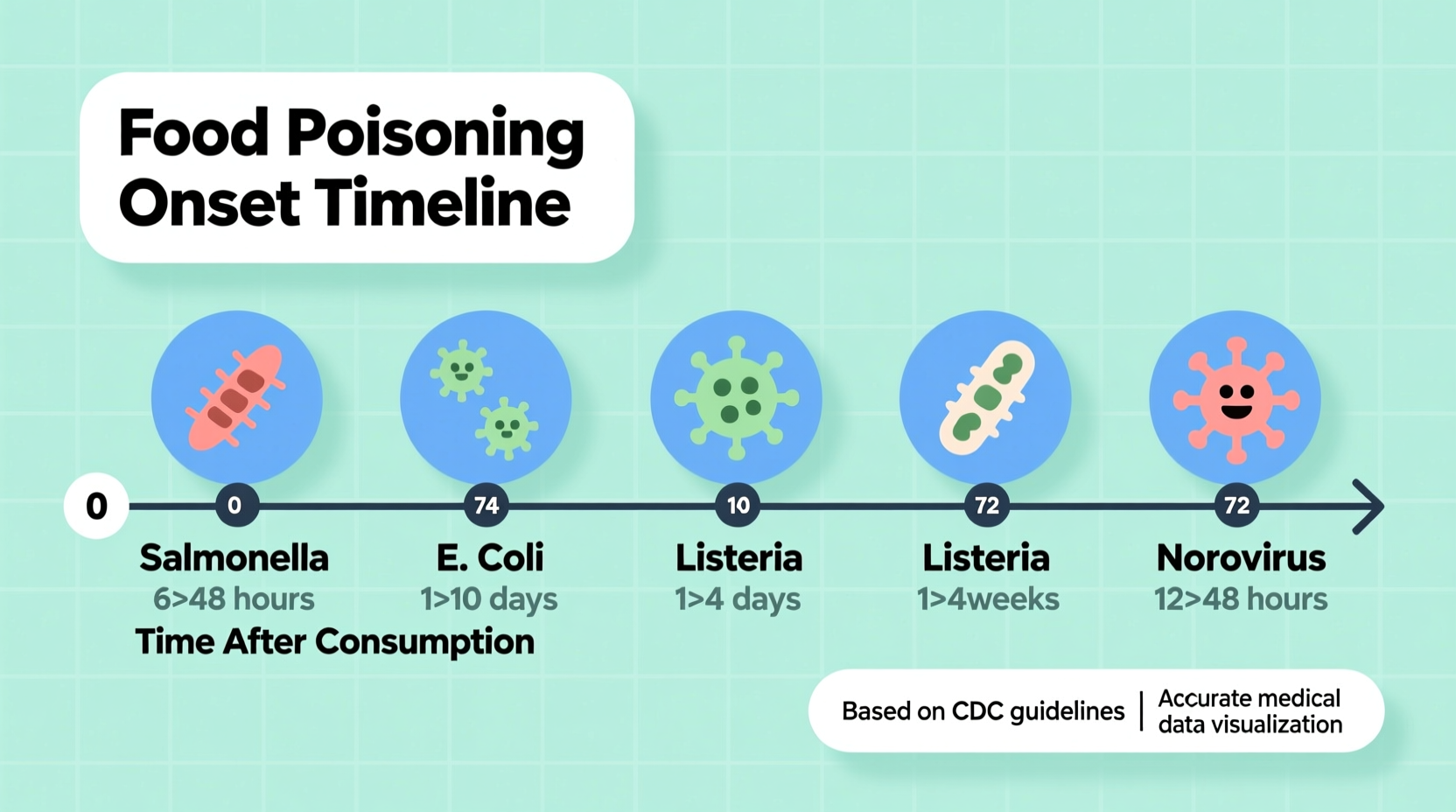Food poisoning symptoms typically appear within 1 to 6 hours after consuming contaminated food, though this timeframe varies significantly depending on the specific pathogen. Bacterial causes like Staphylococcus aureus can trigger symptoms in as little as 30 minutes, while others like Listeria may take up to 4 weeks to manifest. Understanding these timelines is critical for identifying the source and determining appropriate medical care.
When your stomach suddenly turns against you after a meal, one of the first questions that crosses your mind is: How quickly does food poisoning kick in? This isn't just curiosity—it's vital information that can help you determine whether your symptoms are food-related, identify potential culprits, and decide when to seek medical attention. Let's cut through the confusion with science-backed timelines you can trust.
Decoding Food Poisoning Timelines: What You Need to Know
Foodborne illnesses don't follow a one-size-fits-all schedule. The time between consuming contaminated food and experiencing symptoms—known as the incubation period—varies dramatically based on the specific pathogen involved. Recognizing these patterns helps you connect symptoms to potential sources and respond appropriately.
| Pathogen | Typical Onset Time | Common Sources |
|---|---|---|
| Staphylococcus aureus | 30 minutes - 8 hours | Deli meats, salads, pastries |
| Bacillus cereus (vomiting type) | 1-6 hours | Fried rice, leftover rice dishes |
| Norovirus | 12-48 hours | Raw shellfish, contaminated surfaces |
| Salmonella | 6 hours - 6 days | Raw eggs, poultry, unpasteurized milk |
| E. coli | 1-10 days | Undercooked ground beef, raw produce |
| Listeria | 1-4 weeks | Soft cheeses, deli meats, smoked seafood |
This comprehensive timeline from the Centers for Disease Control and Prevention shows why pinpointing food poisoning requires understanding these variations. Many people mistakenly assume all foodborne illnesses strike immediately, leading to incorrect self-diagnosis and potentially dangerous delays in seeking care.
Why Food Poisoning Timelines Vary So Dramatically
Several critical factors determine how quickly food poisoning symptoms develop after exposure:
- Pathogen type - Different bacteria, viruses, and toxins have unique replication rates and mechanisms
- Amount consumed - Larger quantities of pathogens often accelerate symptom onset
- Individual health factors - Age, immune status, and stomach acidity affect vulnerability
- Food matrix - Fatty foods can slow toxin absorption while liquid carriers may accelerate it
For instance, Staphylococcus aureus produces pre-formed toxins that cause rapid vomiting within hours, while Listeria requires time to multiply in your system before symptoms emerge—sometimes weeks later. This explains why you might feel fine after eating contaminated food only to become ill days later, making source identification challenging.

When to Seek Immediate Medical Attention
While most food poisoning cases resolve without intervention, certain symptoms require prompt medical evaluation regardless of onset time:
- Signs of severe dehydration (dark urine, dizziness, dry mouth)
- Blood in vomit or stool
- High fever (over 101.5°F or 38.6°C)
- Symptoms lasting more than 3 days
- Numbness, blurred vision, or muscle weakness (indicating possible botulism)
Pregnant women, infants, elderly individuals, and those with compromised immune systems should contact healthcare providers at the first sign of foodborne illness. The FDA reports that certain populations face significantly higher risks of complications from foodborne pathogens.
Practical Prevention Strategies That Actually Work
Understanding food poisoning timelines isn't just about reaction—it's crucial for prevention. Implement these evidence-based practices:
- Temperature control - Keep cold foods below 40°F (4°C) and hot foods above 140°F (60°C)
- Proper hand hygiene - Wash hands thoroughly before handling food and after bathroom use
- Cross-contamination prevention - Use separate cutting boards for raw meats and produce
- Safe cooking temperatures - Use a food thermometer to ensure meats reach safe internal temperatures
- Leftover management - Refrigerate perishables within 2 hours (1 hour if above 90°F/32°C)
Remember that food safety isn't just about cooking—it extends to proper storage and handling throughout the food journey from purchase to consumption. The World Health Organization emphasizes that most foodborne illnesses are preventable through proper food handling practices.
Myth vs. Reality: Common Food Poisoning Misconceptions
Many people operate under dangerous assumptions about food poisoning timelines:
- Myth: "If I don't get sick within a few hours, the food was safe." Reality: Some pathogens take days or weeks to cause symptoms
- Myth: "The last thing I ate made me sick." Reality: Symptoms often appear long after consuming the actual contaminated food
- Myth: "If food smells fine, it's safe to eat." Reality: Many dangerous pathogens don't affect food odor or appearance
These misconceptions can lead to improper food handling practices and delayed medical care. Understanding the actual incubation periods helps you make more informed decisions about food safety and health management.











 浙公网安备
33010002000092号
浙公网安备
33010002000092号 浙B2-20120091-4
浙B2-20120091-4